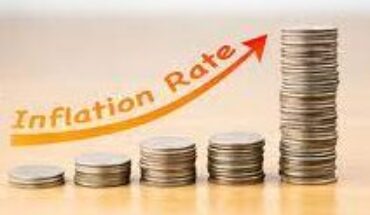Donald Trump’s economic policies in his previous tenure were related to increasing trade volume, US-friendly trade agreements, positive import-export policies etc. and during his tenure, Trump focused on increasing economic cooperation between the US and India, strengthening business relations, encouraging investment in US-based technology companies, etc., which was largely beneficial for India. Due to this policy, Indian IT and technology professionals also got employment in the US. However, due to Trump’s “US First” policy, high import duty was imposed on many Indian products, due to which India also suffered some losses.
Based on the implications of the analysis of available data, it is believed that Trump can implement his old policies in his new tenure as well, which can benefit India largely. India is less likely to suffer any extensive loss in this case, because even after the Corona pandemic, the Indian economy remains strong and the growth rate in India is better than some developed countries of the world.
In the last term, under the leadership of Trump, US had a hard-hitting attitude towards China and even now US does not have cordial relations with China. There is no hope of any significant improvement in the situation after Trump comes to power again. Obviously, such a situation can be beneficial for India, that is, new opportunities for increasing business between US and India can be created.
The Federal Reserve Bank of US cut the policy rates by 50 basis points on 18 September 2024, so that investment could increase. It was necessary to do so due to the possible economic recession in US. The cut in interest rates has partially strengthened the dollar. On the other hand, Trump’s return to power in US reduced policy level uncertainty in US, which increased investor confidence and increased the possibility of investment boom as well as strengthened the dollar.
The Modi government is looking at Trump’s return positively. Therefore, both Sensex and Nifty saw a rise after Trump became president. However, the rupee weakened, and the dollar strengthened, but this is also natural, because US is the most powerful country in the world from both economic and strategic perspectives and the US dollar is the strongest currency in the world.
Anyway, the strengthening of the dollar has increased the possibility of increased investment in India because it is cheaper for investors to invest in rupees and everyone wants to get more returns with less investment. Therefore, there is a lot of scope that foreign investors will invest more in the Indian market when the dollar strengthens. This will strengthen the Indian economy. However, the other side of such a situation can also be negative, for example, weakening of the rupee against the dollar can reduce capital flow in terms of portfolio investment.
When the dollar strengthens, the export of Indian products becomes more competitive, because their price decreases in the foreign market. Therefore, the strengthening of the dollar may increase investment in sectors which are dependent on exports, such as IT, pharmaceuticals, etc., but it increases the cost of loans taken in foreign currency in India, which increases the financial pressure on companies. Thus, it would be correct to say that the strengthening of the dollar will have a mixed impact on the Indian economy.
Gross Domestic Product (GDP) figures in India are continuously improving. Global rating agency Moody’s has raised India’s GDP growth forecast for calendar year 2024 to 7.1 percent, from 6.8 percent and 6.1 percent earlier. However, Moody’s has kept India’s GDP growth forecast for 2025 unchanged at 6.5 percent, while the GDP growth forecast for 2026 is 6.6 percent. Even though Moody’s has lowered the GDP growth rate forecast for calendar year 2025 and 2026 compared to calendar year 2024, these figures are better than many developed countries of the world. However, retail inflation rose to 6.21 percent in October, which is more than the tolerance limit of 6 percent set by the Reserve Bank of India. Vegetables have contributed the most to the increase in inflation in October, as their price has increased by 42.18 percent. The current rise in inflation cannot be called permanent, as both the crop and arrival of vegetables remain good in the winter season. Therefore, inflation may remain soft from November 2024 to March 2025.
At the domestic level, the Indian economy is continuously strengthening. The government has collected Rs 1.87 lakh crore from Goods and Services Tax (GST) in October 2024 and it has increased by 9 percent on an annual basis. This is the second largest tax collection ever from the point of view of overall tax collection. Earlier, the government had collected GST of Rs 2.10 lakh crore in April 2024 and Rs 1.87 lakh crore in April 2023. At the same time, last month in September, the government had collected Rs 1.73 lakh crore through GST. October is the eighth consecutive month when GST collection has been more than Rs 1.7 lakh crore. GST collection in the first half of FY 2024-25 was Rs 10.87 lakh crore, which is 9.5 percent more than the first half of FY 24. The central government has collected a net direct tax of Rs 11.25 lakh crore from April 1 to October 10. This includes corporate tax of Rs 4.94 lakh crore and income tax of Rs 5.98 lakh crore. The Income Tax Department had collected direct tax of Rs 9.51 lakh crore during this period last year. Thus, there has been an increase of 18.35 percent on an annual basis.
According to the Reserve Bank of India, there was a slight stagnation in the loan uptake in the month of October, but it increased in the month of November. There was a sharp increase in the retail and construction sectors. Personal loans are expected to grow by 40 percent, while in the agricultural sector it is 24 percent. The demand for loans in the service sector and the infrastructure sector is also consistent and the loan uptake is accelerating economic activities.
At present, GDP is increasing, tax collection has also increased. Inflation has become a bit uncontrolled in the month of October, but from November 2024 to March 2025, it is expected to remain within the tolerance limit set by the Reserve Bank of India. The increase in loan uptake is accelerating economic activities, which is likely to continue in the coming months as well. The dollar is likely to strengthen and the US policies under Trump are likely to be favourable to India. In short, it can be said that with the Indian economy continuing to remain strong at the domestic level and Trump’s economic policies being broadly favourable for India, the Indian economy will continue to remain booming in the coming months.
Satish Singh, Ahmedabad Based Senior Columnist, views are personal






